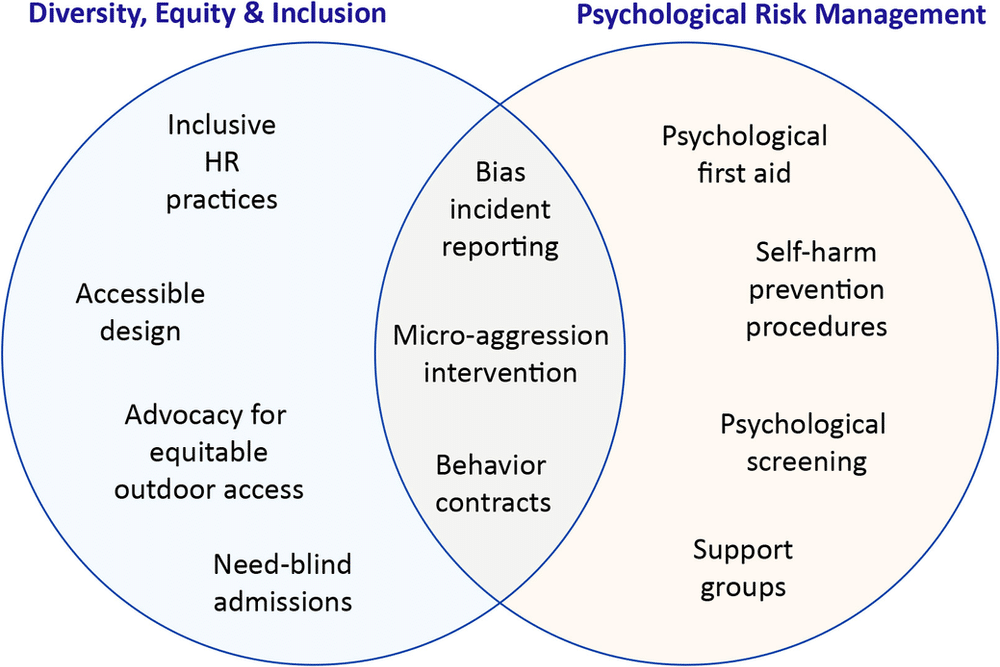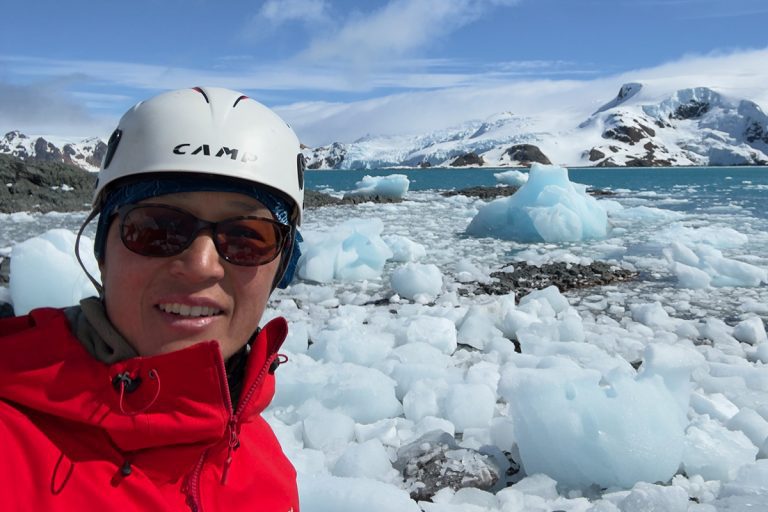
Adventure, travel, outdoor and experiential programs want their participants and staff to experience psychological well-being.
And many of these programs want to support inclusion and equitable access to the experiences offered by organizations like theirs.
These two aims—managing risks of psychological harms, and supporting DEI—have areas of overlap.
And in other ways, they are very distinct.
It can be helpful to have clarity about where psychological risk management and DEI intersect, and where they do not.
Why is this important?
Issues of psychological well-being and DEI are important for any organization that wants to uphold high ethical standards, enjoy good customer service satisfaction, attract and retain the most-qualified staff, and have the highest probability of experiencing business sustainability.
However, there is not universal agreement on how these topics are defined. This lack of shared understanding can lead to confusion and conflict. As a result, organizations may not adequately achieve their goals to support psychological risk management and DEI.
In addition, for organizations providing training or consulting in these subjects, it’s important that they be able to communicate with clarity about these topics, so that the support they provide is optimally effective. (Viristar, which provides training resources and consulting services in psychological risk management and DEI, has first-hand experience with this need.)

Historical context
Risk management has historically focused on preventing physical harms such as injury and illness, and also on loss such as property damage and reputational harms to an organization.
There is a growing awareness of the importance of psychological safety as a critical element of risk management.
There is also a growing awareness of the importance of considerations of inclusion, equity, justice, access and belonging.
This brings us to a place where we want to pay attention to managing risks of physical harms, supporting psychological well-being, and supporting diversity, equity and inclusion.
What Is Psychological Safety?
We can understand psychological safety as a condition in which group members feel they will be treated respectfully, and where they will not be embarrassed, punished or rejected for speaking up.
In a psychologically safe space, people feel comfortable being themselves.
Characteristics of a psychologically safe environment include:
- People can ask questions, share ideas, and voice concerns without fear of judgment or humiliation.
- People can ask for help, provide feedback, and make mistakes, without risk of negative consequences to self-image; status, or career, academic or related aims.
- People feel included and empowered, and experience well-being.
- Group members are interested in each other as people.
But psychological safety is not just about fostering an environment free from harmful things like bullying, harassment, and exclusion. It’s also about helping people recover from psychological stress injury.
A person who has experienced psychological stress injury from a traumatic experience may need support to regain equilibrium and mental well-being. Providing support in this process falls within the scope of psychological safety.
Examples of experiences that can lead to psychological stress injury include, for example:
- violent assault
- caring for a fatally injured group member
- surviving a serious incident, such as an avalanche, motor vehicle collision, or flood, where other group members are permanently injured or killed

What Is Psychological Risk Management?
We can understand the term psychological risk management to mean a systematic, intentional, and ongoing process of reducing the risk of psychological harm so far as is reasonably practicable.
One way to compare “psychological safety” and “psychological risk management” is to say that psychological safety is an end result of effective psychological risk management.
What is meant by Diversity, Equity and Inclusion?
The subjects of diversity, equity and inclusion have to do with systematic and indefensible exclusion of people based on characteristics such as gender, race, sexual orientation, religion, or gender identity, among others.
This involves systemic barriers to access to, for example, education, medical care, recreational experiences, job opportunities, or physically safe settings.
Where DEI and Psychological Risk Management Intersect
Some activities can be considered to be part of both DEI efforts and psychological risk management practice.
Consider a group of young people on a travel adventure. Every person in the group is a member of the dominant religion, except one. That individual wears a head covering as part of their religious faith, and asks for special accommodation in the daily schedule so they can practice their faith.
The group leaders help ensure that the individual from the non-dominant group has the time and space for religious observance. And the leaders ensure the individual is not faced with complaints about how they are inconveniencing everyone else in the group, and is not subjected to disrespectful remarks about their attire.
The activities of the group leaders represent psychological risk management—taking steps to ensure a welcoming environment where every person is accepted for who they are.
And, this also represents support for equity and inclusion—making the travel experience workable for people of various backgrounds, and fostering a group culture that welcomes a person from a non-dominant group that might otherwise face prejudice or discrimination.

Where DEI is the Focus
But considerations of diversity, equity and inclusion in adventurous, expeditionary and related experiences go beyond group management.
For example, an outdoor education organization might have a robust and well-funded program for providing outdoor experiences for young people from low-income backgrounds, rather than focusing on a target market of affluent customers. And the organization might advocate—either directly to policy-makers, or through their industry association—for government policies and funding to make outdoor education available to all youth in the region, not just the privileged.
This is an example of DEI in action. And in this example, a linkage to psychological safety among members of a group is not strong and direct.
Where Psychological Risk Management is the Focus
A participant on a guided adventure tourism experience has a history of generalized anxiety disorder. Being away from home and familiar support systems, and facing challenges and uncertainty, can increase their anxiety level. On a trek between remote hill-tribe villages in northern Thailand, the individual experiences an acute anxiety attack.
The expedition guide skillfully uses psychological first aid practices to help the individual return to a place of stability and psychological well-being. They empathize and practice active listening as the participant explains their concerns. The guide encourages deep, slow breathing. They enlist trusted other members of the group to offer emotional support, and adjust the day’s schedule to reduce external stressors. The guide arranges for a satellite phone call between the participant and their family member, projects a sense of calm, and helps the individual create and put into action a plan for coming to a place of stability and well-being.
This is an instance of good psychological risk management—in this case, psychological first response. However, there is no particularly strong linkage to issues of diversity, equity and inclusion.
In another example, in 2015 an earthquake struck Borneo, triggering a deadly landslide on Mount Kinabalu. Seven students and two teachers on a school-organized trek up the mountain died, along with their adventure guide. Providing emotional support to the survivors of this psychologically traumatic and tragic incident represents psychological risk management, but can be considered to not be closely related to issues of diversity, equity and inclusion.

Limitations
There are many different ways of understanding ideas around psychological risk management, psychological safety, and diversity, equity and inclusion.
Concepts around these ideas are still evolving, as are best practices.
There are other reasonable ways to think about these ideas, besides those presented here.
Not everyone may agree on the approaches described here, or any other particular approach to considering these topics.
Conclusion
Every adventure-based, experiential education, outdoor recreation or travel organization seeks to reduce the risks of psychological harm to their clients, employees, and members of the greater community.
And each of these organizations benefits from taking steps to foster a more equitable and inclusive world which welcomes the full diversity of humanity.
Clarity on how considerations of psychological safety and DEI do and do not intersect can help organizations and individuals precisely develop and put into place practices that meet their goals.




